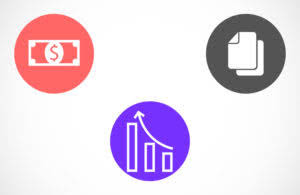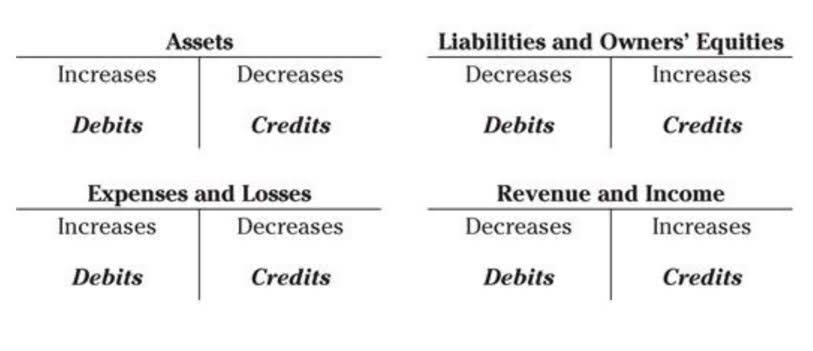A Guide to Automated Financial Reports

Emphasize how financial statement analysis will be enhanced, allowing for more detailed and transparent reports. Provide comprehensive training sessions to ensure everyone feels confident using the new software. Remember, it’s about making your team’s life easier, not just changing processes for the sake of it.

Financial Reporting Automation: Benefits & Best Practices
This is particularly helpful for sectors under the tight grip of regulations like finance, healthcare, and manufacturing. Additionally, AI equips you with tools for scenario analysis, which is essential for robust planning and risk management. This strategic foresight, combined with detailed insights into spending patterns, helps in refining your strategies for optimal financial performance. If your financial data is a puzzle, every cash flow piece of information about your budgets and accounting must fit together perfectly. Inaccuracies or missing pieces can skew the entire picture, leading to everything from minor mix-ups to major headaches such as compliance issues and regulatory fines. With an AI software solution, you can automate the tedious yet critical task of validating and cleansing financial data.

Optimize financial data validation and cleansing

It’s advisable to create a comparison chart that outlines the pros and cons of each tool based on features and cost to aid decision-making. On the other hand, business intelligence tools are more robust by nature and can handle multiple tasks. They analyze and visualize information and have the power to pull information from multiple business systems to transform data into insights.

Guide to Payroll Reconciliation: Ensure Accuracy & Compliance
- Funnel is an automated reporting tool that focuses on marketing and advertising data.
- When automating reports, you’ll get to customize dashboards and visuals, so you can incorporate all the KPIs you want to measure.
- From educating clients about reporting requirements to helping them navigate the nuances of transactions, these regulations offer a chance to transform your practice.
- You can use AI solutions to analyze historical financial data and provide predictive insights, guiding informed budgeting and investment decisions.
- To take full advantage of this opportunity, firms must follow a thoughtful implementation strategy.
- By fostering a culture of continuous improvement and involving all stakeholders, organizations can enhance user adoption and satisfaction, ultimately leading to a more successful automation initiative.
Please reach out to start a conversation on how to begin or advance your journey toward automated financial forecasting. This is why working with a team of experts in AI and finance can be invaluable. They can help your finance department implement and maintain powerful AI systems while also providing guidance on how to interpret and utilize the insights they provide. financial reporting automation Navigating the maze of regulatory requirements including GDPR, Sarbanes-Oxley, and Basel III can be daunting for growing startups. As your business expands, so does the complexity of complying with these ever-changing standards.
Seamless Integration with ERP Systems
- Instead, the software automatically pulls data from various systems, including legacy ones, to quickly generate reports.
- In business settings, having insights for decision-making processes can end up saving time and money, protecting your reputation, adhering to compliance and regulations, and reducing mistakes.
- This shift transforms finance teams from number crunchers to strategic partners.
- In this post we’re going to highlight a few crucial areas in which automation tools are absolutely worth the investment.
- By automating the data intensive steps in financial reporting, you ensure consistency and accuracy of the data across finance reports.
- Software can be programmed to easily incorporate new sources of data or modified to include further parameters of analysis as required by the firm over time.
- This is sent directly to their manager for validation, and on to the finance team.For finance teamsEach employee has their own Spendesk profile and debit expense card.
This shift enables organizations to leverage their financial data law firm chart of accounts more effectively, identifying trends and opportunities that may have previously gone unnoticed. As teams become less bogged down by administrative duties, they can engage in higher-value activities that drive the business forward. With automation, the time it takes to generate and distribute reports is significantly reduced. Automated systems can compile data and create reports in a fraction of the time it would take manually.
- You can make informed business decisions without waiting for the end of a reporting period.
- Provide comprehensive training to your finance team, covering both the technical aspects of the software and the updated workflows.
- The structure of the reports should be immediately understandable, laying out data clearly.
- Adjustments may be necessary, but with a little persistence, you’ll soon be cruising along with efficiency and ease.
- HighRadius’ record to report software seamlessly integrates with leading ERP systems.
- Every transaction and change made within the system is recorded and can easily be traced back to its source.
Automate financial risk assessment and mitigation
- By accelerating the reconciliation process in accounts payable and receivable, your key decisionmakers get access to accurate financial data for real-time strategic planning and forecasting.
- By reducing manual work, automation enables finance experts to spend more time on strategic work like analysis and forecasting, while spending less time on mundane, repetitive tasks.
- As the volume of financial data and transactions increase, manual accounting gets more difficult—resulting in inefficiencies and lagging business growth.
- True financial automation handles these steps automatically, without the need for human intervention.
- Now, your startup can benefit from the same powerful technology to confidently navigate financial risks and make informed decisions with high chances of success.
As organizations automate their financial reporting, they must ensure that sensitive financial data is protected from breaches and unauthorized access. Implementing robust security protocols and regularly updating them will be crucial to safeguarding data integrity and compliance with regulatory requirements. Here is a look at the benefits, requirements and potential issues when automating financial reporting processes.
